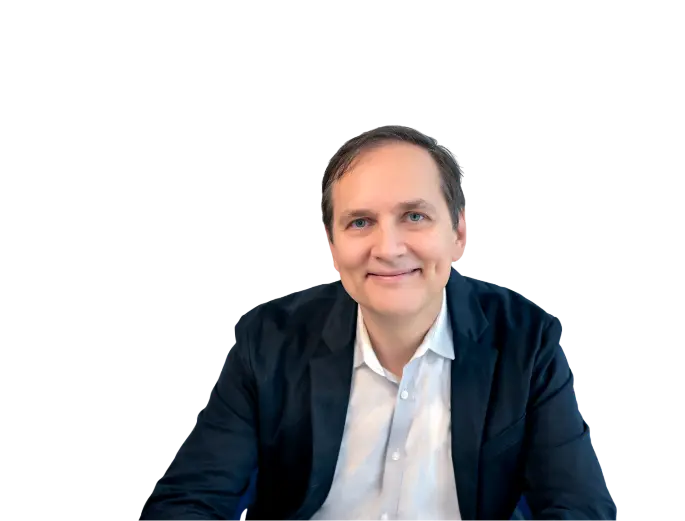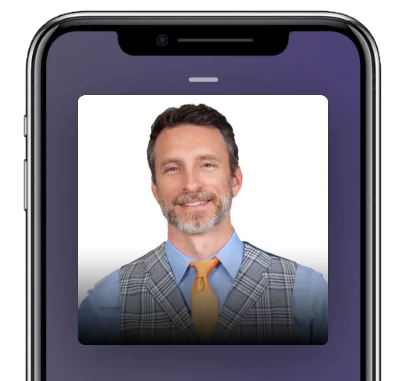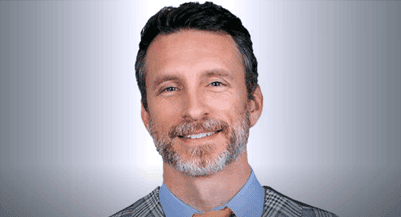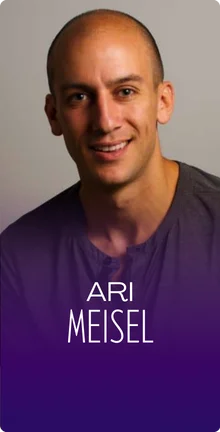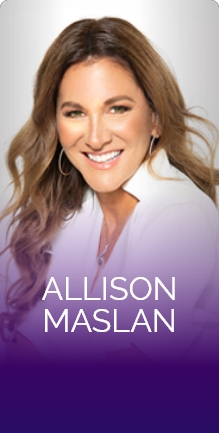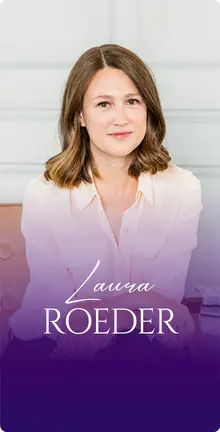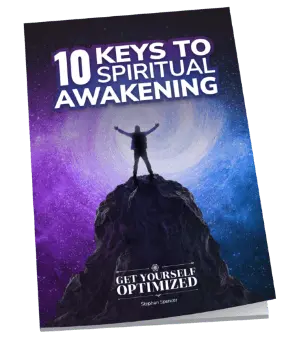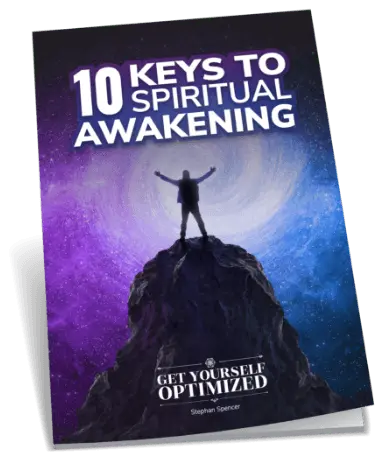Mike, it’s so great to have you on the podcast. I’m really excited. We’re going to have a ton of fun.
There you go, brother. I’m excited too, Stephan. Thanks for having me. You really turned me on to something. I didn’t know you could record on Skype.
Awesome. I’m going through your audiobook and I just love how you have these little sidebars, little anecdotes, and stories that are not in the printed book. What got you into doing that? Is that a new thing or a trend that you just came across? Or is that something that you invented on your own?
I did not invent it on my own. It was a reader feedback. In my first book or two, I did not do sidebars and then one of my readers said, “I listened to this one author and they were doing sidebars.” I think it was Gary Vaynerchuk who did it. I don’t recall who they’re referring to, but I think it was. And he said, “I wish you would do that.” I was like, “Wow. I’ll do it.” The next one, I did it. My publisher, the mainstream publishing, they were hesitant. They were like, “I don’t know.” The feedback has been overwhelmingly positive. I think it’s because it’s a bonus material but also, I can speak to why I wrote certain things and give a different perspective that you just can’t do in the written book so I’ve done it in every book I’ve done since. Actually, my publisher has asked me to go back to my old books and re-record them with the sidebars.
That’s great. Very cool.
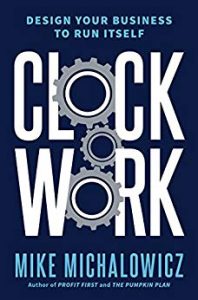
The interesting thing, I’m just on a roll here now, Clockwork was my most recent book. After I wrote it and submitted the manuscript, there are six months on average before the book actually goes to the shelves. During those six months, the research doesn’t stop and there were some enlightening ideas. I was like, “Oh my gosh, I discovered something new.” The recording of the book happens about a month before live so I’ve got a five-month window of additional research that I can pack into the audio that wouldn’t be in the print book until the re-released version of the print book comes out.
Oh, that’s very smart. I have that problem with my books, especially the big one. It has a thousand pages. The Art of SEO. I co-authored this thing. I don’t think I could’ve done it by myself. This goes out of date so quickly because it’s SEO, it’s Google algorithms and stuff. I have an audio version of my most recent, Google Power Search: The Essential Guide to Finding Anything Online with Google. That’s an easy read. Somebody could take that on a flight with them. I think with The Art of SEO, they’d get charged extra luggage fee for going overweight so I want to have a capability of being more up to the minute because six months go by, submit it to the publisher, in my case, O’Reilly, and then the book finally comes out. So much has happened in those six months.

I think that’s how authorship is morphing now. So much changes so quickly. Some books can have a perennial shelf life. They can just live on and on. But other books, by necessity, need to be speaking to the current arena around us, like your SEO book. It’s hard to write perennial SEO because the algorithms are changing but then, we as authors, need vehicles to deliver that content fresher and faster.
I think Audible is the next level but beyond that, I think these dynamic books—this is just my belief where the future is going—is where you have all these different sections and concepts but you’re able to go back, edit, and update those sections. The book today may have a section on—in my book—how to work with XYZ Bank and then, I may want to update that when new banking regulations come out. Just that one section now is updated and somehow I can push that either through some web platform or something. But I think that’s where we’re going, to these more dynamic living books than printed ones and sit on a shelf forever.
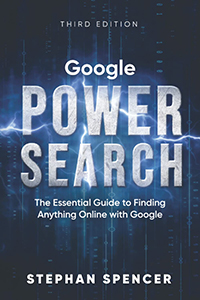
In fact, that triggers this thought that we’re going to have interactive books where it’ll be an immersive experience. The book that I think is most effective at conveying this vision is called The Diamond Age: Or, A Young Lady’s Illustrated Primer. I got turned on to this book by Steve Jurvetson. If you know who that is, he’s one of the top VCs in the world. Draper Fisher Jurvetson, that’s the VC firm that invested in Hotmail, and maybe Google, and stuff. Anyway, he’s super-wealthy.
He said this is his favorite book, The Diamond Age. It’s about the coming era of molecular nanotechnology and what life can be like but it’s written as a novel. This young lady has this book that she carries with her, which is an interactive primer, fully immersive virtual reality, and all this sort of stuff, and you get a sense of what’s going to come to pass. Like movies will be an interactive changeable experience. Kind of like we’re getting the sense with the Bandersnatch, interactive-choose-your-own-adventure type of movie that was released on Netflix. Imagine that on steroids. This is a very exciting time where so much is going to change in such a quick time frame in our lifetime.

No question. I love the concept of immersion. My son just got, I think it’s called Oculus or something. One day, he bought it, comes home. I hear him hollering in his room. I go over there. I’m like, “What are you doing?” He said, “I tried this thing on.” I couldn’t believe it. You know you’re in a fantasy because there’s a dinosaur coming at you and a second later, you’re looking at this building. This is the gen one. It is immersive. I was like, “Wow.” It feels real. I think that’s an opportunity in so many ways.
This is my grand prediction with therapists. There are a lot of people that have passed ones and were never able to say their departing words. They haven’t brought closure to that. Through virtual reality, you can bring back and you can have a dialogue with someone that’s deceased now and bring closure. I think the therapeutic implications are significant and extraordinary. It has this one little idea of how our world is going to change. As an author, I have a responsibility to leverage that, to be of service through that vehicle.
In fact, there are AIs that are being built right now where you just feed it all of the receipts of your loved one and any kind of journal notes, all of that stuff, and then AI takes that information and build an interactive personality so you can chat with your deceased loved one and get responses back as if it was the person.
It’s wild.
Anyway, let’s go back to the day in, day out, got to make a profit, you got to keep cash flow in the bank so that you can pay your bills and that sort of stuff. That’s pretty immediate and yet there are so many business owners, myself included, who are all focused on the revenue line and the profit was an after effect or a side benefit that happens at the end of the year or at the end of the quarter. It’s not something that’s being engineered into the business. I wish I would have read your book or listened to it two decades ago when I started my entrepreneurial journey back in the mid-90s.
I had eight figures pass through my hands over that time period that I squandered because I was focused on growing the revenue line. Growth, growth, growth, which I achieved and I had a successful exit in 2010. I’ve got two businesses now that I’m working on and I’m all in with profit first now. I’ve got the bank accounts set up. I just want our listeners to understand how important this concept is to their business. I think everybody is going to become a business owner in some fashion because they’re going to become freelancers or whatever, right?
I think so. It’s funny, our stories, how parallel they are. I started in the mid-90s to 95. Not an easy time for business, by the way. I was in the technology space. The business was never profitable but I grew it to a couple of million of revenue and I sold it to a private equity. That’s where I made money. My second company was a computer crime investigation. Fast growth trajectory, $7 million run rate in 2½ years, acquired by Robert Half International, Fortune 500. Here’s the thing that I don’t readily share on my resume, is that businesses were never physically healthy until I sold them. That’s where I made my money. That I was surviving check by check. I started to believe this concept that profit comes last. As long as you stick it out long enough and you build a business fast enough, that you’ll make money at the end. I decided to become an angel investor.
Entrepreneurship is interpreted to hustle and grind, but I don’t think the goal is to work more. The goal should be how to get more done by doing less. That’s the real mission. Share on XMy third venture was investing in different startups. I had no right to be in the space. I was chock-full of arrogance and ignorance. All of these businesses collapsed. I got wiped out. What I found is profitability is not an eventuality. That’s what we’re told. Actually, our vernacular is profit is the bottom line or the year-end. All the terminology we use is, it comes last. What I realized is in our human programming, our behavioral wiring is when something comes last, that’s the equivalent of saying it can wait or it’s insignificant. You would never say, “I love my family so much that’s why I put them last.” Or, “I just had a health scare. I’m going to start putting my health last.” That all means insignificant. What we say is, “I’m going to put my family first. I’m going to put my health first.” Prioritized stuff comes first. Insignificant comes last.
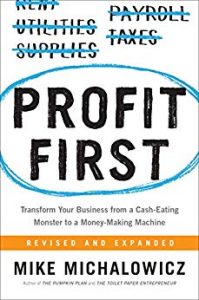
What I did in the Profit First book is I flipped the formula. What I say is it’s not sales minus expenses equals profit. The profit comes last. It’s sales minus profit equals expenses. What I mean in practice is every time you have a transaction in your business, regardless of the size, we’re going to take a predetermined percentage of that money, allocate it to our profit, literally transfer that money over to an account that we call profit, hide it from ourselves, and then the residual is what we have to run our business off of. What this is now is a simple process of reverse engineering profitability. You take your profit first, your business will tell you what’s truly available to operate. It’s now what’s leftover, your operating expenses and you must address your business accordingly. Cut unnecessary expenses. Most businesses, 5%-10% is actually pretty easy and perhaps more significantly increase margin. How do you dictate more for what you’re doing? By doing those two things, you are now serving the profit you’re taking first.
That’s an amazing concept. It means that you show up at the buffet with a smaller plate, you eat less, and you trim the fat without it being as painful.
First, it’s terrifying when you start taking your profit first because most businesses spend every penny they make. But the reason is that almost every business is run by humans and we have this thing called Parkinson’s Law. It’s this behavioral mechanism that’s in all of us. Basically, what Parkinson’s Law states is the more of a resource you have, the more we’ll consume that resource. The buffet line, the bigger the plate you have, the bigger your serving is because you have a bigger plate. But the greater the consumption because there is more food on your plate. If you go there with a little coffee saucer, I’ll tell you, you’re not going to eat as much because you can only put so much on the plate and then you eat a small portion.
Parkinson—he was a theorist in the 1950s—studies this behavior of our consumption expanding to meet the supply. It points out that it works with everything. Food, time. The more time you’re given to do something, the longer it takes to actually complete it. But it also applies to money. In most businesses that I’ve worked with, money comes into the bank, the entrepreneur looks at her bank account, see what her balance is, and based upon what they see there, makes the decisions on how to spend money. The more money that’s coming in, the more they spend. That’s why in most businesses, as the income is increasing, almost uncannily, the expenses are increasing the exact same rate.
What we do is we take the profit first out and hide it away. Now, you force a constriction on how big that plate is, how much money is available, and you’re working within the confines of that. The response is not this miracle system. It’s simply just leveraging our behavioral mechanisms. If we supply less, we’ll spend less. If we supply more, we spend more. By taking our profit first, we force less supply.
The last point I wanted to make is that over 150,000 businesses are doing this now where we have over 3000 documented case studies. What we found is that none or very few of these businesses actually compromise the level of service they provide, the owner doesn’t compromise their lifestyle, and the happiness quotient doesn’t go away. It seems like the businesses go on unabated by taking their profit first.
That’s great. I know that it’s cost me millions and millions of dollars to not have this system or this mindset in place over these last couple of decades. You know what, the best time to plant a tree was 20 years ago, but the second-best time is today that’s why I took immediate action. I got my bookkeeper to start implementing. We did the instant assessments and bank accounts set up. What’s funny though is she said, “You’re already really profitable, like crazy profitable, 69% profit margin.”
I went on this crazy stupid spending spree at the end of the last year because I wanted to reduce my taxes. This is how genius I was. I wanted to spend a healthy six-figure amount of money in the course of a month to get my tax liability down. I regret that now and I’m paying the piper for that. For example, I’ve got a contract in place where I prepaid for the year with this vendor and they’re doing mediocre at best job.
And you’re trapped.
Yeah.
That’s a classic thing. First of all, it points there you’re very human. A human response will spend $10 to save $3. Profit First is all based upon behavioral mechanisms. There’s a thing called loss aversion. Loss aversion is once we possess something, dollars coming in our pocket, when it’s taken away from us, it’s more painful than if we never had them in the first place.
If I had $10 in my hands and say, “Hey, I’m going to give this to someone else,” and you just watch me give it to someone else, it’s like, “Okay.” If I said, “Hey, Stephan, here’s $10. Give this $10 to the other person over there.” It’s like, “Whoa, hold on. That’s my $10. Clearly, you gave it to me first.” Once we have possession of something, we put more significance in it.

The problem with loss aversion is once we receive money and the taxman comes in knocking, now we feel that they’re taken from us. How do we address this in Profit First is we have to defeat loss aversion. We set up an account called the tax account. As money flows into the business, the business actually just hands it over to the government directly, basically. It just allocates the money and hides it away. Then when the tax bill comes, the money is pulled from the tax account and we don’t feel that loss aversion. I start to get emails at the end of most quarters where people are like, “I had such a great end of the quarter. I’m paying taxes. I feel so joyful about this because it’s not coming out of my pocket.” Logically, this is a shell game. We’re just moving one clump of money here to there. But behaviorally, it works with our mechanisms. We don’t make as many illogical moves like blowing money. For me, it’s a car, “Oh, I’m going to get that expensive car. I’ll try to write it off.” I’m like, “I can’t use that car the way I wanted to. It’s a piece I shouldn’t have gotten.” Then there’s regret and disappointment. It’s better to have our business pay our taxes and we start behaving more logically.
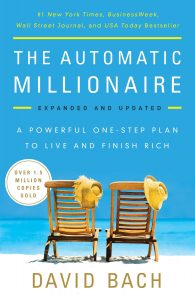
This reminds me of the concept of paying yourself first and have it go immediately into a savings account. I learned this one from David Bach who wrote The Automatic Millionaire and a bunch of other books. This is something I implemented four or five years ago. I set up something called infinite banking using life insurance policies. I don’t know if you’re familiar with this.
I’m not.
This is something that the ultra-rich do apparently. I was in this Tony Robbins’ Platinum Partnership. Again, very expensive but actually very well worth it. Six-figure investment. One of the benefits of that six-figure investment besides meeting my wife, which is the best investment in the world, is that I got this insight into how the wealthy protect their money. This particular model is that you use a certain kind of life insurance policy that a certain kind of life insurance company offers. You have to go through a mutual insurance company because then, the profits go to the policyholders, not to the shareholders. You don’t want a shareholder-owned life insurance company.
Anyway, you have to get the right policy, the right kind of company, etc. You use the cash value, you use that as a money machine, and you keep plowing money into it. That was the way that I paid myself first. I’ve set up four policies for me and so far I could keep adding more policies. My wife is insured as well. We use this as a way to not just pool money but we loan money out to others instead of using the bank.
You become your own bank.
You become your own bank. Yeah. The best thing about this is the money that’s in the policy, even when you take out a loan—yeah, you have to pay interest on the loan—but the entire fund, everything that is in the cash value is still accruing a guaranteed minimum 4% interest even if you’ve loaned out 50%, 80%, 90% of that.
It’s really slick. This is something that I’ve gotten into and been using for the last four or five years, but it’s only personally paying myself first. I never did that with the business with profit first.

This concept of pay yourself first has been around for eons. It’s documented in books like The Richest Man in Babylon. It talks about pay yourself first. This pay yourself concept has been around forever. It’s a proven strategy. Again, it works with our behavior. We remove money for our future first. We will adjust our lifestyle to live off of the remainder. That’s basically what it points out to. The thing is since it works for ourselves and our personal lives, of course, it works in our business because we are the same self who’s running the business. There is no difference.
There is a saying in entrepreneurship that our business is really a parent-child relationship. I start the business. I give life to this business. “I nurture it and care for it.” I’m its parent, it’s my child. One day, it will have its own legs. It will support itself. The return will support me. I call BS on that. I think it’s a horrible analogy. I think the real analogy is conjoined twins. The business and us have lives and that lives interlocked together. We share critical organs. The separation, therefore, is a very surgical operation, but the point is, when you’re conjoined, as one part of the entity’s health goes one way, so does the other entity. If you’re struggling financially at home and your business is crushing it, your business is going to take on that debt responsibility or vice-versa. You can be crushing it at home but the business is struggling, you’re going to start struggling at home. We need to bring health to both of equal importance. The methodology is the same. It’s the pay yourself first principle, just applied to business.
Very cool. Talking about behavior and how loss aversion works and all that, I’ve been talking with BJ Fogg. Do you know BJ?
No. Maybe. I think it sounds familiar. I don’t know.
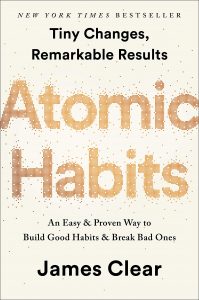
He’s pretty famous. He’s like the guy around behavior change. You probably heard of the book Atomic Habits by James Clear?
Yes. James Clear. I know James.
Okay. BJ is the guy that James based a lot of the book on.
Atomic habits are essentially tiny habits and you write on the coattails of existing habits to create new habits. That’s all BJs research. He invented this terminology to refer to an emotion that, as of this point, prior to BJ, hasn’t been named. He calls it shine. Basically, the idea is you get this emotion when you have success. Let’s say that you have done intermittent fasting for seven days now in a row like, “Yes. I’m on a roll,” but then, you miss a day. That shine goes away. If you build an app, for example, or you have a methodology that doesn’t keep feeding the shine, you keep getting that sense of success, that feeling of mastery and control of your own destiny and all the sort of stuff, then you’re going to fall off the wagon.
With the Way of Life app, which is an app I love, it’s a brilliant idea, you get to check the box and show a little green box everyday that you keep that chain going of that new positive habit or the thing that you’re trying to break and you’re like, “Okay, I didn’t smoke again for another day.” You don’t want to break that chain. Like Seinfeld talked about, he would put an x in everyday of the calendar that he wrote a new joke and he would want to keep the chain going otherwise, he starts all over again and that feels pretty painful.
But if you focus on in your app development, let’s say your way of life, and you focus on the shine, then it’s not just keeping the chain going, but how do I get somebody back on the wagon because then they feel defeated, they feel like a loser like, “Oh no. I got to start all over again. I got a red box instead of a green one. I fell off the wagon. I never got back on in terms of using that app. It’s been over a year. I loved that app while I was successful with it.”
Right. It’s fascinating. I’m wearing right now the iWatch or whatever. I think this is version one. It’s one of the originals.
An Apple Watch.
I use the fitness app on it and it builds this chain every time I work out. But here’s what it does. If I miss, it says, “Hey, it’s okay. You’ve got this. Let’s get back to it.” It starts a reverse chain. If I miss two or three consecutively, it’s coming more alert and say, “Hey, what’s going on?” It motivates me to get back to it. I don’t have the perfect solution but I have found that I work out much more religiously ever since I’ve worn this watch than before.
There’s also a certain point, I found with the habit is just through profit, that once you do it long enough, it defines you. It’s okay to slip up. It’s like, “Oh, that was just a bad day.” Or, “I just missed it,” or whatever, but it doesn’t become the new habit of saying, “I don’t have this and I give up.” I don’t know how long it takes to get there but I do know it takes time to get there.
If you spend money, it’s an expense. If the money is distributed to the shareholders for their use, it’s a profit. Share on XWhen we do profit first, when people implement the system, the people fail. We have over 150,000 companies doing this now and the people fail. It’s because they went full out, full from day one. They said, “You know what, I haven’t been profitable. I want to do your numbers like 60%+,” or whatever, “20% profit. Let’s do this.” They’re all hyped up for a day and then when the bill is coming, they can’t pay the bills. They’re like, “This doesn’t work for me. I’m a failure,” and they go all the way. The person goes all the way to the other direction.
The people who have been successful say—and we teach this in the book—start with 1%. Just allocate 1% of your income to profit because that’s such a negligible amount that it’s almost impossible to break that chain. If $1000 comes in, I’m saying take $10, put it in a profit account because $1000 versus $990, that isn’t going to have an impact on how you run your business, but the $10 in the profit account, that will have an impact on your perception, that you can allocate through profit. Do that for three months, just 1%, 1% and then after three months, then we go to 1½% or maybe 2%. And then after another few months, we go to 3% or 4%.
Now, we’re in this habit and it gets stronger and stronger. Now, we meet in a year or two, but now we’re doing 10% or 15% and the habit is established. If we slip for a little bit, we get right back into it. It’s the small micro-steps, maybe this atomic habits to some degree, it’s the small micro-steps of progress is making us become a new believer and wire our brain in a new way. That even if we slip up, on standard, this is a new way, we’re going to stick with it.
That’s very insightful. I think it might even become part of our identity. “I’m a profit-first entrepreneur. This is how I am in the world.” The difference between somebody who says, “Well, I’ve stopped smoking,” and somebody who says, “I’m a non-smoker.”
Huge. I am such a believer in labels. I’m talking to entrepreneurs regularly and I think the word entrepreneur has been bastardized. I think entrepreneur has been interpreted to hustle and grind and I don’t like those terms. I don’t think our goal is to find out how to work more. I actually think the goal of an entrepreneur is how do I work less? How do I get more done by doing less? That’s the real mission. This hustle and grind, I do understand the sentiment, but the way it’s being absorbed, it’s horrible.
It’s incentivizing the wrong behaviors.
It totally is. In the beginning, you do make some sacrifices and you will have to put yourself out there in a way you haven’t before, but if you’re going to carry your business on your back, that’s no way to carry a business. Your back will break. I think the word entrepreneur has been bastardized. Even though I love entrepreneurship, and I will do anything for it, and I love the word, I don’t like its bastardization.
I tell people, “I’m a shareholder,” which is like a deer in the headlights. Next time you’re at a dinner party and someone says, “What do you do?” “Oh, I’m a shareholder in my business,” or, “A shareholder in a business.” They go, “What does that mean?” It sure means you don’t work there. I got my shareholder in Ford. Ford sends this distribution. I’m like I’ll hop in the car and say shoot down the Ford and work the line for a little bit. I’ve invested in the stock. I’ve taken risk. I’m hoping the valuation goes up—recently, it’s been declining.
We’re shareholders in our own business. And yes, the business needs people. Maybe the only person we can hire temporarily is ourselves, but you’re a shareholder and your believers are acting like that. A shareholder does not work the line, does not work in the business. They render votes. They influence who’s running the place. You may insert yourself for a period of time but as a shareholder, you got to extract yourself out from the doing as quickly as possible.
There’s another expression. Let’s go work on the business, not in it.
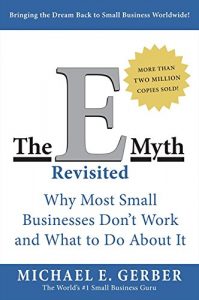
Exactly. Michael Gerber, he popularized that. That’s exactly what it is. When I was with Michael, this is a few years ago, we were keynoting together in Monterrey, Mexico, of all places, we go out for dinner and I’m sitting with him. I talked about the challenge of this inverse is on—I love his book, it’s a must-read, The E Myth—where I believe is, as being perceived, that this is a switch. That one day, if I work in my business hard enough, I’ll be permitted to work on my business. One day, the switch will flip and now, you’re on your business.
The reality is the more you work in your business, the more you come entrenched in the business, the more dependent it comes. It is a surgical extraction. Back to that conjoined twins, we need to start today, be very deliberate in removing ourselves, but it’s not going to happen in a second. This extraction process is over time.
What I studied and I wrote about it in my book, Clockwork, was that an entrepreneur needs to physically remove themselves from their business, in many cases, to discover where the business is dependent upon them because when you come back, that stuff won’t get done. Those are the things you need to systematize and then you got to extract yourself again and see is it really working now without you. Whatever’s not working, you got to come back, fix that, systematize it, and remove yourself again. It’s this process of actually physically and digitally disconnecting from the office for longer and longer periods, that gives this business the direction it needs to run itself.
Then it has staying power. It’s not self-employment, it’s actually a business because a business isn’t a business if it doesn’t have an exit strategy, if you can’t end up selling it when you want to.
If you like, I’ll work until I can’t work anymore. Sadly, that’s the case for many people. It doesn’t usually end on their terms. It’s either they’re too tired, or sick, or there is something wrong. Now, the business has no value whatsoever. It’s done. The ultimate business is a business that has no dependency on the owner itself.
I go to McDonald’s, admittedly pretty regularly when I’m traveling. I stop by McDonald’s and I’ve been asking this, Stephan, this is my favorite question and I encourage anyone listening in to do this, go to any McDonald’s, go to the cashier and say, “Hey, do you mind if I can speak with the owner real quick? I’d like to just thank him or say hi,” or whatever. The owner is never at a McDonald’s or have yet to been at McDonald’s. I’m like, “Is it the person in the little closet there that they call an office?” “No, that’s the store manager.” “Is it the person flipping the burgers or cooking the fries?” “No. Those are workers.” I’m like, “Where is the owner?” “Oh, they own multiple McDonald’s. They come in here and pick up the money every so often.” That’s what the owner does. Picks up the money. McDonald’s is a great example of building a structure where there’s no dependency on the owner. I think that’s what we need to aspire to do.

People come into my office going, “Hey, is the owner here?” and I’m like, “Oh, no. He hasn’t been here in a few months.” That’s a business that runs on itself. I take a four-week vacation. I’ve done two so far. I have a third one coming up in just a few months. Four weeks away from my office. I’m not in contact. They changed my email. I have no access to anything. I believe in it so much now that I have my employees now going through four-week vacations.
Kelsey, the number two here in the office, went on an eight-week vacation. The goal is I don’t want to have any linchpin dependency because Kelsey, one day, may show up and say, “I just don’t want to work here anymore,” and then I am screwed. By scheduling an eight-week vacation, we need to find out how to get all the work off her plate, systematize it so other people could do it. We captured all her knowledge, all these videos, all these different things, outsourced it to the rest of the team. The rest of the team did it. Kelsey comes back and now there’s redundancy. Kelsey can do it or others can do it. Now, others are going on vacation. It’s bringing about this redundancy so there’s no dependency on one single linchpin anywhere in the organization, including me.
That’s great. One thing I learned from Ari Meisel who was on the show is that if you just have the videos of the trainings, that only takes you so far. If instead you have somebody go through those videos and create checklists based on the videos and then a different person actually takes those checklists and tries to implement them and then doesn’t have success because there are some missing pieces, there are some gaps, if you have the same person who shot the videos, do all three steps, then the stuff is not going to get exposed where there are gaps. That was genius.
I have a different flavor of that but I think it’s similar to the same end result. What we’ll do is we’ll film a video recording the process, we’ll give it to the person that now has to be responsible for some process, they will be given that process for a period of time so they can figure it out and then require to make another video of them recording the process. The reason is the smartest student in the room is always the teacher. We know when another employee can teach the process, they’ve mastered the process.
It’s another flavor. I made it to combination punch. Get the checklist created with the person doing the work also being able to teach it. Maybe it’s the combination one, two punch.
I love that. That reminds me of a statistic I heard not long ago that your average retention rate, if you’re paying attention and you really care about the topic, let’s say you’re in a seminar or something, it’s about 30% but it goes up to as much as 90% if you have the intention of teaching that subject and what you’re learning to others.
Oh, I’ve never heard of that. That’s so awesome.
It’s really good. Another thing I want to mention that I learned from Michael Gerber, he was also a guest on the show—listeners, definitely check that episode out—Michael explains in the E Myth that there is a separate company that you set up called a NewCo. You don’t try and retrofit all the new systems and everything into the existing business. That’s just a recipe for disaster in his view. You start building these new systems into a new entity that you call NewCo or whatever your name is for this new business and that, from the ground up, has all those great new systems in place. What’s your thought on that? Is that something you also subscribe to or do you do in and fix the existing business?
I love that idea. It’s the first time I heard of it. My instinct response is that’s an amazing idea because when it comes to building something new in an existing business, you also dismantle the other thing and there is this political and social momentum that many people don’t account for.
I’ll walk into a business and they’ll say, “That’s the president.” I’ll say, “Okay, but that’s not the person running the company. It’s her, the receptionist.” Because you can see the social web that’s going on and the control that a person has. When it comes to improving your business, I actually have not done that process that Michael Gerber purports. I’ve tried to build new and remove the old scaffolding but that required terminating employees in certain circumstances and taking away habits. If you ask someone, “Why do you do it that way?” They’re like, “That’s the way we’ve always done it.” I have to unwind that embedded culture.
So I do like this idea of NewCo. Just thinking out loud here, I wonder if that forces the same kind of requirement of new belief systems. I wonder if people could take a leap from OldCo to NewCo if they can wash their mind of the old ways. It’s the human element that’s the challenge because we’re not working with robots and computers exclusively. Maybe one day.
If you spend money, it’s an expense. If the money is distributed to the shareholders for their use, it’s a profit. Share on XFrom our early conversation, maybe someday sooner than we expect, but we are working with humans here. We have habits, processes, experiences, political agendas, and biases. Those elements are the ones that are tricky to navigate. I inevitably found that when trying to establish something new, I need the people that are going to be doing the new process to be the ones who invented it, to be discoverers of it because that’s the way they believed in it. It’s a very collaborative effort. It’s not saying, “Here’s a new way we’re going to do things,” it’s like, “Let’s discuss a new way to do things that’s better.” If I can get them to own the process of developing it, they believe in it, they’re much more likely to be successful.
Come to be not just the owner of the idea, but the inventor of it. If it’s their idea, you kind of spoon-fed them but they didn’t realize it, then they’re going to be more invested in it.
Huge. Listen, I’m just as human as all of us. I found this fascinating study. I don’t know the source so this may be a little bit hearsay. There was a study of husbands and wives. They asked husbands first. They said, “When you have an argument with your wife, how often are you correct? Have you determined?” The husband said, “About 80% of the time.” They then went to women and they said, “How often are you correct when you really evaluate it?” The women said, “About 80% of the time.” The most you have is [50:50]. That doesn’t compute. An [80:80] is a 160. It does not work.
Yet it’s human bias that once we render an opinion to cling onto it, even when we actually know it’s wrong, and this is true not just in spousal relationship, this is true in business, that once we become a generator of an idea, we cling onto it. If we don’t, if someone else thrust an idea upon us, it’s natural for us to resist. That’s why I think it’s so important for people to own ideas so they can cling onto it. But to your point, to navigate them to the right idea so they cling onto good ideas.
Isn’t that referred to as confirmation bias?
Confirmation bias, right. That means we only seek out what approves what we’ve decided upon already.
Anyway, this totally goes against my primary adage in life, which is a happy wife, a happy life.
It’s true. That’s not an adage. That’s a plain old fact.
Exactly. Another thing I wanted to talk about with regards to human nature and behavior is there are certain resistances that folks will have to your methodology and your framework. For example, I have a good friend, Greg, who runs a very successful design business. He loved your book.
He’s actually going through Clockwork now and loves that one too, but he went through Profit First. His resistance is in creating the bank accounts. He doesn’t want to do it. He just has a spreadsheet and he’s like, “Well, why do I need to set up a separate bank account? It just seems like extra unnecessary administrivia.” He hasn’t done it but he’s applying some of the processes that he’s learned about from your book.
My question for you is what do you tell him the cost is for not doing this 100%, not setting up the separate bank accounts, and having another bank, a second bank, that holds the tax account and the profit account, that you don’t have an ATM card too, that you’re not constantly checking the bank account balances too? What is he missing?
Often, when I hear people skip that step, they’re avoiding short-term pain and ignoring the long-term gain. Let me explain the reason why it must be at the bank accounts. I’ve surveyed now, easily hundreds of thousands of entrepreneurs. I speak regularly. Every conference, I speak about Profit First. I’ve been speaking for years and years now. I’ll do a survey saying, “Raise your hands if you do what’s called bank balance accounting. I mean you log into your bank accounts on frequency to see how much money you have so you can make financial decisions.” I would say 95% of hands go up. Probably more, but some people do the old alligator claw and a little bit embarrassed.
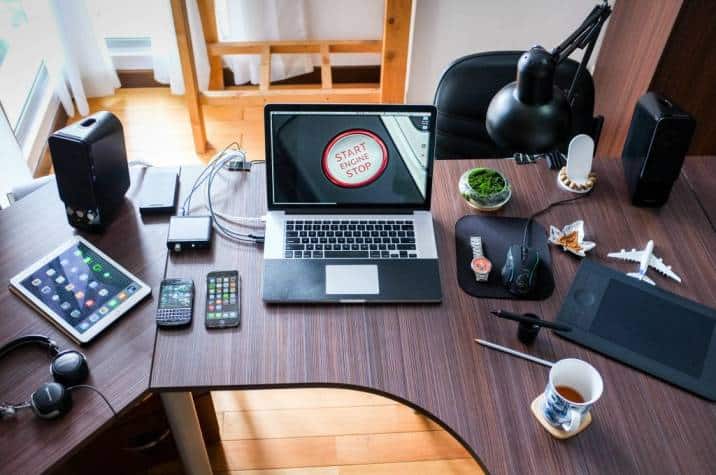
The hands go up and I tell people I want to affirm that that’s natural, typical, normal behavior for a small business owner. We don’t read the accounting statements. We don’t read the income or balance sheet. Actually, some people don’t know how to read balance sheets or cash flow statements. I’m one of those people. I don’t know how to read a cash flow statement. I even question my accountant all of the time, to be honest.
What we’re told in traditional accounting is read the accounting statements, read the balance sheet, read all the different things. Don’t look at your bank account because that’s not reflective of your business. Operate off of these different accounting documents and you’ll run your business just fine. But our natural behavioral path is log in to your bank account because it’s the easiest path to follow. It takes a few seconds to log in, you see how much money you have, and you can make decisions. It’s human nature to revert to the easiest path. Therefore, we have to set up the accounts there to intercept our natural path.
If you do this on spreadsheets like Greg is doing, the question is does he log in to spreadsheets all the time, anytime he needs to consider money? Is that what he always does? He always goes to the spreadsheets first, honestly? I suspect if he’s like most people, no. Most people don’t go to their accounting system first. An accounting system, by the way, is a spreadsheet, it just one with a special interface on the front, but it is simply a spreadsheet. Off your current accounting system, you can go to this thing called the chart of accounts. It has all your money broken out a million different ways already. You already have this system in place. The question is how is it serving you? Most people I ask, they say, “Well, it’s not serving me because I don’t use my accounting system that way.”
I understand that it feels like, “Oh, it’s a pain in the ass to go to the bank for a few hours and set up these accounts.” It’s literally a few hours to set up a few accounts but now, since the money is getting divided up at your bank, there is no avoiding anymore. When you log in, you know exactly what’s available for what purpose before you spend it and that’s the key for Profit First. Do you have the banks?
Right. You’re obscuring your ability to see what’s in your profit account and your tax account by having it as a separate bank that doesn’t have online banking, that doesn’t have an ATM card because that money is not supposed to be considered and if it’s part of the spreadsheet, you’ve totally defeated the whole purpose.
It’s funny. I was talking with a developer about this concept of Profit First. He goes, “We can make an app and we’ll show right in the center how much profit people are making because that’s what they’re looking to do.” I’m like, “Nope. It’s the worst thing to do because they’ll say, ‘Oh, I have this money saved up. I can spend it.’” We need to hide it from ourselves. Out of sight. Out of mind. When stuff is inconvenient, it’s human nature to go to the convenient path, we look within our operating expenses and work within the confines of what’s available. So yes, we get it outside so we don’t see it, we don’t have access to it, make it inconvenient, and you run your business properly because you’re forced to.
There’s another behavior that happens where you have a really good month and you extrapolate that outwards for the next X number of months or years and you think, “Okay, I’ve got a new business that is at this level.” That’s a big mistake, right?
It’s not sales minus expenses equals profit. It’s sales minus profit equals expenses. Share on XI got an email from this guy years ago, This guy sold a product online and has first month he did $100,000. Every month before this, he did about $20,000 or so. You know, $250,000 business. One month, he hits $100,000 because a major media channel wanted to buy his product for this big event they were doing. It brought $80,000 of revenue that month. He emails me and he says, “Now I know what it’s like to run a million-dollar business.” I wrote a little bit of an obnoxious response back to him. I said, “How did you do the $100,000? How did you get the help because you had to do 4 times the value?” He said, “Well, my uncle volunteered to help out and family came in. My kids were working like crazy and all this stuff. We got the job done.” I said, “That’s not a million-dollar business. That’s a panic way to do $100,000 in 1 month. A million-dollar business has the systems to support that.” I said, “I hate to break the news to you, but you have no clue what it’s like to run a million-dollar business. You know how to panic respond to a big order and that’s great, but we need the sophistication.”
I’m speaking on that guy but that’s the natural nature of all of us. We have a good month and we expect that to be the new standard and then we start to spend in our head accordingly. Well, we just did $100,000 this month. Now, I can get to hire these employees and so forth. We know logically it’s the average.
This is what Profit First does. Money comes in, it starts allocating money out to different percentages. It secures the money away for your profit account. That profit doesn’t come to you. It sits on the sideline as the other months roll by and your business will adjust accordingly and be much healthier because you’re not seeing these instant highs and taking all the money out for yourself instantly and also rationing up your lifestyle accordingly.
So you recommend that you take the worst 3 months of the last 12 and average that out and use that as your baseline to assume that that’s not going to come back. You’re not going to always be at this new high. You could very much just as likely be the next month at the average of the low three months rather than continue to keep that trend line going.
Right. We do that calculation because when it comes to calculating, we call it an instant assessment, where we want your income to be for your personal income as a business owner, where your profitability will be, is it very difficult because of loss aversion, very difficult for us to ratchet back our lifestyle. It’s very easy to ratchet up a lifestyle, but to unwind is very quick. Once you buy that house, you knew that mortgage going, to get out of it, I’m not saying legally to get out of it, sell it, to get out of it emotionally is very hard.
There are people, they’ll buy that shiny red sports car they’ve always wanted, they see it in the shop window at the auto shop and they don’t worry much about it, but when they buy it, now it’s their baby. They put it in the garage. The day they can’t pay it and the pink slips are being called, they’re going to repossess your car, people will drop the insurance of the car, never drive it because it’s not insured now but at least we’re saving. I’ll work a second job just to pay the payments on this car. We’ll do all of these extraordinary things to retain something when we possess it, but we wouldn’t do these extraordinary things like working a second job to acquire.
The last thing here is as our lifestyle ratchets up very quickly because of our new norm, it’s very hard for us to unwind. If we set our lifestyle and business expectations and the stuff off of our highest income, I know it’s going to drop again. We’re in real trouble because it’s going to be hard to unwind that. If we set it on our lowest expectations, well, statistically, likely, things are going to get better on average and we won’t go through that loss aversion to that same degree or not at all.
You’ve put a lot of emphasis on celebrating when you met your target. There is this thing called TAPs for Target Allocation Percentages. What’s the key thing about celebrating? I know how to do it but I want our listeners to understand how important it is.
Maybe to go back to that shine factor you’re talking about earlier. What we do is we get into a rhythm with profitability of doing quarterly profit distributions. Sadly, for most small businesses, it doesn’t exist. It’s usually year-end. It’s even considered it’s not there anyway. There’s like this “Oh shucks” moment, “Maybe a year from now, I’ll probably be profitable.” But I insist at profit first that every quarter, every 90 days for profit to come out because it builds up anticipation, the profit comes out, and then we celebrate with it.
Here’s the rule to profit. It’s never to be plowed back or reinvested in the business because that’s never a profit. Profit can’t be plowed back or reinvested. Expenses can be spent. Profit can be distributed to shareholders.
I was at this event and I’m speaking. This woman comes up and said, “You know we had a 28% profit last year so I don’t think I need your system.” I said, “I don’t think you do either. That’s amazing. Congratulations.” I said, “What did you do with all that profit?” She’s like, “We reinvested it.” I said, “What do you mean?” She goes, “Every penny went back into the business.” I said, “Well, then what happens?” She goes, “Well, we spent it. We bought new equipment and spent all this stuff.” I said, “Oh, okay. So it was an expense?” She goes, “Exactly.” I’m like, “That’s not a profit. That’s an expense. I think you need the system now desperately.”
If you spend money, it’s an expense. If the money is distributed to the shareholders for their use, it’s a profit. It is black and white. We put confusion in there with this reinvestment or plow back term. That’s rule one.
I am a major fan of eradicating and eliminating debt, building our own cash equity in our business, becoming our own banker, to your point with that example earlier with life insurance. So, rule two is if we have debt, we still allocate money to profit. But when a profit distribution comes out, a vast majority of that profit will be used to eradicate and alleviate all of our debts over time, even to do it multiple times, but a portion still come out to celebrate to the owner, for the shareholder to use in any way they want.
The idea is the endorphin release. If we receive a profit and can spend it, we feel good. It builds our muscles around profitability. We want to experience that again. If our profit has never come out to it, it actually causes to reverse. We start to become resentful of our business. Gosh, another quarter with no profit. My business is sucking my soul away.
This pay yourself concept has been around forever. It’s a proven strategy. Share on XEven if we have debt that we’re eradicating using the profit account, which is the one exception to just used to celebrate, we still celebrate it at a portion. Once the profit is fully available for us and coming out to us, it’s always used to celebrate. Celebration does not mean go have a crazy party—if you do, please invite me—what it is is maybe saving for your future, maybe it’s putting into that cool infinity loop you set with your bank, maybe it’s putting money for your kids’ education, or maybe it’s going out for an amazing dinner, a great vacation, and save for education. But it all has to reward you. It has to give you that endorphin release. I know paying bills in your business for profit is not an endorphin release.
So when you’re paying down your debt, most of it goes down to the debt repayment and then a little bit goes for celebration, you have a strategy where you say take the biggest nut to crack like the biggest debt and pay that off first, and pay the minimums on the rest of them until then you get that first one paid off, and then you go to the next one, you pay that one off fully rather than allocate tiny little slivers towards every single one of your debts.
The answer is kinda. It’s actually paying your smallest debt first, not your biggest.
Okay.
This is not my strategy, I read about it through Dave Ramsey. It’s a strategy that’s been around before. He calls it the debt snowball. What Dave Ramsey purports is that if we pay our smallest debts first while maintaining the minimums, we will have the earliest win. It’s not based upon interest rates, it’s about the amount due. If I have a small debt that I’m focusing on first, I’ll pay it off way faster than with a big debt.
When you tear up that statement, and I’ve done this, I had a lot of debt, I went through this process, it feels amazing. But now, the minimum payment you are making for that small debt plus the extra payments now gets added on that minimum payment toward the next debt. Now, you have two minimum payments going toward the next smallest debt. You start taking a little bit of momentum there and you start focusing on that. When that one is eradicated, again, it’s one of the smaller debts, you get there faster. Now, you have three minimum payments going to the next debt. You start getting this snowball of minimum payments and starts becoming a big chunk of money eradicating the debt.
This is a behavioral concept. Logically, it doesn’t make sense. Logically, you always pay off your highest interest rate debt first. But behaviourally, by going up to the smallest dollar amounts due first, you get the earliest wins, endorphin release, you get momentum, and you’re more likely to pay off all of your debt than any other way.
That makes total sense. I think the key part of this that we need to underline is that you got to tear up the statement and say, “Oh, that feels so good.” That’s the celebration.
Actually, I have one debtor I had that only sent digital statements. I printed it out, every single one and just sat there for about half an hour just tearing up and dropping it. It felt so good. It’s the emotional release. That is the rewiring of our brains. It was funny, I think it was Suze Orman, she’s actually a remarkable presenter. I’m extremely impressed. She said, “The day you get more satisfaction out of savings than you do spending is the day you’re rich.” The day I started ripping up those statements, I was like, “Oh my gosh, I’m getting more joy of not paying bills than buying stuff.” That was the day that I knew wealth in my business and my life was inevitable. I think that’s what we all need to get to. By ripping up statements, that was way more satisfying than buying something new in many cases, to be honest.
Amazing. We’re getting close to time here. I want to make sure the TAPs, the Target Allocation Percentages is something that is doable for our listeners so that they’re not trying to go crazy, then they miss the mark, then they feel bad, and then they said, “Screw it.”
And then they give up.
Where do they come up with the TAPs?
The biggest failure that we have with the Profit First system in our case studies is that a business goes in with high TAPs, Target Allocation Percentages. Baby steps. Start slow. We actually have two terms. We have TAPs, which is the target. We have CAPs, which is your Current Allocation Percentages. What we tell businesses is we look at their historical numbers and say, “You have no profit historically,” which by the way is the norm for most businesses. We’re targeting TAPs of maybe a 20% profit in the future. We’re not going to start at 20%. We’re going to do it in small increments. We simply next figure out the time frames and say, “We want to get there in two years.” That gives us eight quarters, two years. So you take 20%, our target from our current spot, which is 0, and then 20% divided 8, that’s roughly 2%, 2½%.
What I do is the first quarter, I now set it to 2½% profit. That’s small enough. You start allocating money to profit. A $1000 comes in. I’m saying take $25. That’s 2½%. That’s negligible and you got the rest of your money around your business. Then, over time, in the next quarter, now we go up to the next increment. 2½% goes to 5%. We slowly step our way up into this process. Every time you take a step up, there is a little bit of growing pain. You got to cut cost, you got to increase margin, but then you adjust, then we do it again. Maybe it takes two years to get to your true TAPs that you are targeting, but you’ll get there much better, much more successfully than if you just try abruptly doing it today. It’s like if you’ve never worked out and you go to the gym, you’re like, “I’m going to start lifting this huge weight.” You’re going to rip your shoulders out. Let’s start slow and let it grow.
That’s awesome. Great advice. All of this was fabulous. I’m a huge fan. Thank you so much. Now, where do we send our listeners to, to get your books, to learn more, to up-level their lives and businesses?
Stephan, thanks for letting me share this and I’ve got the spot for you. It’s mikemotorbike.com. Here’s the thing. It’s really mikemichalowicz.com. I found, Stephan, no one could spell Michalowicz, but mike motorbike, as in a motorcycle, everyone can spell and remember because it rhymes. That was my nickname in highschool so that’s what I’m using. So go to mikemotorbike.com. It’s my website. You’ll find all my books there with free chapter downloads so you can explore before you decide to purchase or not, but I also used to write for The Wall Street Journal so my articles are there. I’m a podcaster and a blogger. All that content, it’s all free at mikemotorbike.com.
Thank you so much, Mike. This was a ton of fun.
Thank you so much, Stephan.
Thank you, listeners. We’ll catch you on the next episode. This is your host, Stephan Spencer, signing off.
